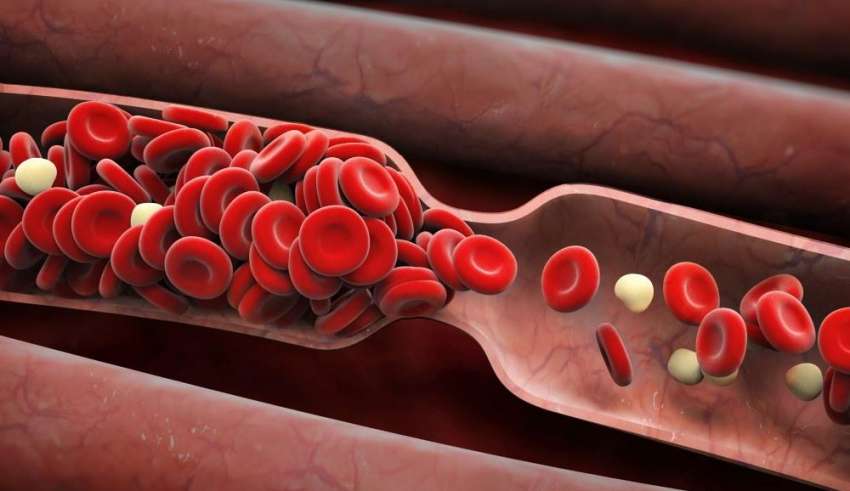
Deep vein thrombosis is a condition where a blood clot frames in at least one of the deep veins of your body. This generally happens in the legs. You may get pain or swelling from this, however it additionally can happen with no symptoms.
You can get deep vein thrombosis on the off chance that you have issues with blood clotting. It can likewise happen in the individuals who don’t move for an extended timeframe. This could be after surgery, an accident, or when you are restricted to a bed for an extended period.
The risk with deep vein thrombosis is that blood clots may break free and go to your lungs which may enter the blood stream, causing an aspiratory embolism.
Symptoms of Deep Vein Thrombosis
Deep vein thrombosis has the accompanying signs and symptoms:
- Swelling in the diagnosed leg. Now and again, you may get swelling in the two legs
- Pain in the diagnosed leg. This agony ordinarily starts in your calf and might have a craving for cramping or soreness
- Deep vein thrombosis can in some cases occur with no perceptible symptoms
The indications of a pneumonic embolism include:
- Unexplained sudden beginning of shortness of breath
- Chest agony or inconvenience that deteriorates when you take a deep breath or cough
- A bleary eyed feeling, tipsiness, or blacking out
- Quick heartbeat
- Coughing up blood
Reasons for Deep Vein Thrombosis
The essential driver of deep vein thrombosis is poor blood circulation. On the off chance that your blood circulation slows down, blood can pool. This makes the likelihood that the cells will stick together and start to clot. Individuals those who have blood clots effectively are at a more serious hazard for deep vein thrombosis.
Surgery
You are more well-suited to get a clot after a surgery that reduces blood circulation, usually after surgery to your legs, arms, or chest. These surgeries can let tissue, protein, and fats go into your veins. At the point when a part of a vein gets harmed, it can discharge substances that reason blood clotting.
After a serious surgery, you might be on bed rest. This keeps you from utilizing your muscles. This can prompt impeded blood stream.
Hazard Factors for DVT
Deep vein thrombosis can influence you at any age. In any case, in the event that you are older than 60, your odds of getting it are more likely.
You should be attentive on the off chance that you have had a sickness that lays you up in bed for over three days. Additionally, on the off chance that you have ever had dissemination or clotting issues some time recently, at that point you can create them again.
Here are a portion of the critical hazard factors for deep vein thrombosis:
- Damage that reduces blood stream. Especially a broken pelvis, hip, or leg.
- Certain growths and tumor medicines
- DVT or aspiratory embolism in your past
- An acquired blood-clotting issue
- Loss of motion
- Hormone treatment for anti-conception medication or postmenopausal symptoms
- Pregnancy or late birth, particularly by means of a C-area
- Varicose veins
- Earlier heart attack, stroke, or congestive heart failure
- Gut infection
- Lifestyle and Habits
Lifestyle changes can affect whether you will get deep vein thrombosis or not. On the off chance that you are stationary and don’t move around in particular, at that point this could put you at rusk for deep vein thrombosis. A long plane flight or a long auto excursion can likewise be an issue. When you don’t move around much, blood tends to settle in your legs.
On the off chance that you are in a circumstance where you can’t move around for drawn out stretches of time, it is essential to take breaks where you get up and extend your body and your legs. There are even a few activities that you can do while sitting in one place. You can walk set up and musically move your arms around.
Gaining additional weight can likewise be an issue for deep vein thrombosis. Additional weight puts additional strain on the veins in your lower body. This makes it harder to keep the blood moving well.
Smoking likewise influences both flow and clotting.
Abdominal area DVT
Despite the fact that it is an uncommon condition, DVT can happen in your abdominal area also. Some hazard factors for this are:
- Having a catheter in an arm vein
- Getting a pacemaker or implantable cardioverter defibrillator for certain heart conditions
- Tumor almost a vein
- Likewise, in strange cases, exhausting the muscles in your arms after some time can prompt clots.
- Tests and Diagnosis
To analyze the condition, your specialist will get some information about your symptoms. They will do a physical exam that will search for swelling, delicacy, or staining of your skin.
Additionally tests may include:
- Ultrasound
- Blood test
- Venography
- CT or MRI examines
- Medications for Deep Vein Thrombosis
Clotbusters
When you have a more extreme kind of deep vein thrombosis or aspiratory embolism, or if pharmaceutical is not working, your specialist may attempt diverse meds. These meds can be thrombolytics. These medications can bring about dying, so they are just utilized as a part of hazardous circumstances.
Filters
On the off chance that, you can’t take any of the medicines, at that point a filter can be embedded into the vena cava in your guts.
Pressure stockings
These stockings assist counteract swelling that accompanies deep vein thrombosis. These stockings go from your feet to your knees. The weight that they apply decreases the odds that your blood will pool and clot. You may need to wear the stockings amid the day for a few years.






